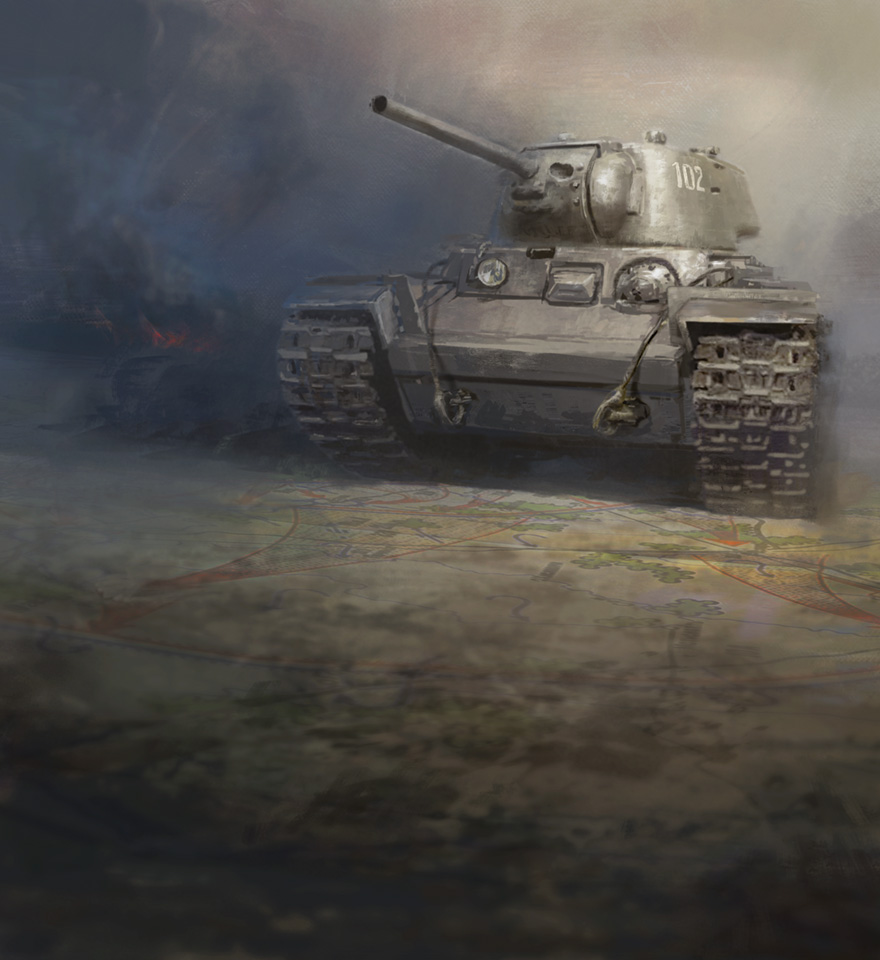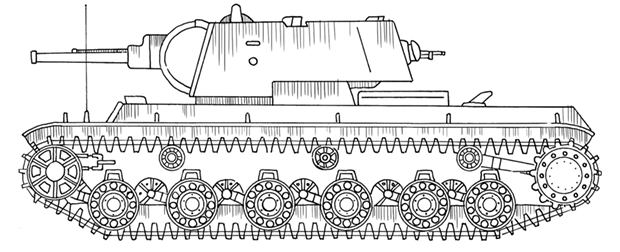KotinJoseph
March 10, 1908, Pavlograd, Russian Empire (now Dnipropetrovsk Oblast, Ukraine) —
October 21, 1979, Leningrad, USSR (now St. Petersburg, Russia)
Heavy tank KV–1
For some reason, those who start wars think that they will be quick, easy, and victorious. But in fact, they always turn out to be long, bloody, and depressing.

In August 1914, the German emperor and Prussian King Wilhelm II said, “Soldiers! Before the leaves fall from these linden trees, you will come home!”. But World War I dragged on for 1,554 days, engulfing every continent except Antarctica. And eighteen million people did not return home.
Before World War I, the skill of fortification engineers in almost all armies had reached such a level that the enemy had no chance to break through the combined fortifications. The necessary military equipment was simply not available. In autumn 1914, hundreds of kilometers of territory turned into solid lines of trenches, drains, wire barriers, and concrete fortifications. The more the sides attacked each other, the deeper the foot soldiers burrowed into the ground. For months and years, the soldiers could not move a single kilometer. That’s why the war was even called the positional one.
It was time for tanks to appear. Armored vehicles already existed, but their cross-country capability was not the best. That’s when tractors and their tracked engines came to mind. On September 15, 1916, the first British Mark I tanks took part in the battle against the German army. It was decided to camouflage the tanks to get them from the factory to the battlefield. Their uniforms were, at that time, a bit strange, so when they wrote Tank in the road documents, which in English, French and German meant a tank for water, for example, it did not alarm anyone. Seeing them in combat, the military quickly appreciated the advantages of the new equipment, and by the end of that war, all the world’s greatest armies had tanks. It became clear that subsequent wars would have a completely different character...
In the 1930s, the Soviet Union decided to rearm the army. That was when Joseph Kotin, a student of the Mechanization and Motorization Department of the Leningrad Military Technical Academy, worked on his diploma project. The project to develop a wheeled-tracked tank based on a truck had to be presented twice, first in front of the professors and then the army supervisors, who were just looking for talented engineers.

Heavy tank КV–1
Kotin was only twenty-nine years old when he became head of the tank design bureau at the largest machine-building plant in the country in Leningrad. Tanks for the army were transported across the frozen Ladoga Lake during the blockade years. But at that time, the plant had just received the task of developing a multi-turret breakthrough tank. Of course, Kotin was not personally involved in designing the tank. A large group of engineers he supervised worked on its development. At first, it was planned that the tank would have three turrets. But gradually, this idea was abandoned, and the tank received two turrets and its scaled-down copy one turret at all. Both tanks were sent for frontline trials, just as another war was going on — this time the Finnish one.
The double-turret tank did not pass the test, but its “smaller brother”, named
Since then, the design of tanks has undergone significant changes, and world experts are confident that tanks will still exist until their bicentennial, at least until 2116. But it would be better if the occasions for this would finally come to an end. Because positional or dynamic, war is still scary.